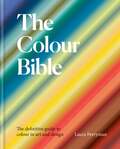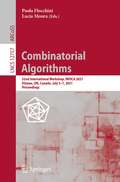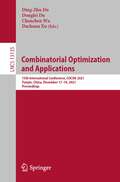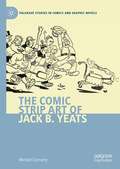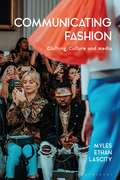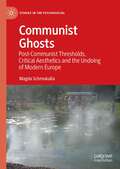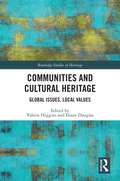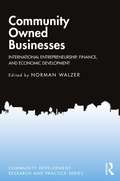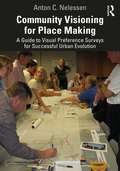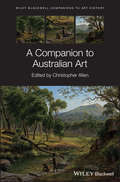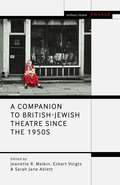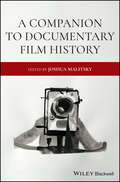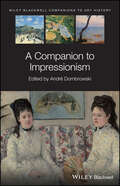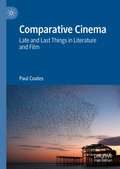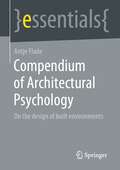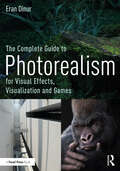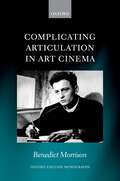- Table View
- List View
The Colour Bible: The definitive guide to colour in art and design
by Laura PerrymanAn essential source for graphic designers, artists, interior designers, fashion designers, illustrators and creatives of any kind who work with colour.Colour is intrinsic to the human experience; it guides us with subconscious visual cues throughout our lives. Get it right in your design or art and you can enhance mood and atmosphere, and create a desired psychological or even physiological effect. The Colour Bible is a contemporary handbook for navigating this fascinating world of colour. It dives into 100 profiles of significant colours and tracks them through their genesis, historical usage in art and design, and contemporary connotations and uses. - A potted history of each colour- Key colour associations from around the world- Contemporary connotations and brand design- Practical advice on how to use and combine colours in your work
Combinatorial Algorithms: 32nd International Workshop, IWOCA 2021, Ottawa, ON, Canada, July 5–7, 2021, Proceedings (Lecture Notes in Computer Science #12757)
by Paola Flocchini Lucia MouraThis book constitutes the proceedings of the 32nd International Workshop on Combinatorial Algorithms which was planned to take place in Ottawa, ON, Canada, in July 2021. Due to the COVID-19 pandemic the conference changed to a virtual format.The 38 full papers included in this book together with 2 invited talks were carefully reviewed and selected from 107 submissions. They focus on algorithms design for the myriad of combinatorial problems that underlie computer applications in science, engineering and business.Chapter “Minimum Eccentricity Shortest Path Problem with Respect to Structural Parameters” is available open access under a Creative Commons Attribution 4.0 International License via link.springer.com.
Combinatorial Optimization and Applications: 15th International Conference, COCOA 2021, Tianjin, China, December 17–19, 2021, Proceedings (Lecture Notes in Computer Science #13135)
by Ding-Zhu Du Donglei Du Chenchen Wu Dachuan XuThis book constitutes the refereed proceedings of the 15th Annual International Conference on Combinatorial Optimization and Applications, COCOA 2021, which took place in Tianjin, China, during December 17-19, 2021.The 55 papers presented in this volume were carefully reviewed and selected from 122 submissions. They deal with combinatorial optimization and its applications in general, focusing on algorithms design, theoretical and experimental analysis, and applied research of general algorithmic interest.
The Comic Strip Art of Jack B. Yeats (Palgrave Studies in Comics and Graphic Novels)
by Michael ConnertyThis monograph seeks to recover and assess the critically neglected comic strip work produced by the Irish painter Jack B. Yeats for various British publications, including Comic Cuts, The Funny Wonder, and Puck, between 1893 and 1917. It situates the work in relation to late-Victorian and Edwardian media, entertainment and popular culture, as well as to the evolution of the British comic during this crucial period in its development. Yeats’ recurring characters, including circus horse Signor McCoy, detective pastiche Chubblock Homes, and proto-superhero Dicky the Birdman, were once very well-known, part of a boom in cheap and widely distributed comics that Alfred Harmsworth and others published in London from 1890 onwards. The repositioning of Yeats in the context of the comics, and the acknowledgement of the very substantial corpus of graphic humour that he produced, has profound implications for our understanding of his artistic career and of his significant contribution to UK comics history. This book, which also contains many examples of the work, should therefore be of value to those interested in Comics Studies, Irish Studies, and Art History.
Common Image: Towards a Larger Than Human Communism (Image #201)
by Ingrid Hoelzl Rémi MarieWestern humanism has established a reifying and predatory relation to the world. While its collateral visual regime, the perspectival image, is still saturating our screens, this relation has reached a dead end. Rather than desperately turning towards transhumanism and geoengineering, we need to readjust our position within community Earth. Facing this predicament, Ingrid Hoelzl and Rémi Marie develop the notion of the common image - understood as a multisensory perception across species; and common ethics - a comportment that transcends species-bound ways of living. Highlighting the notion of the common as opposed to the immune, the authors ultimately advocate otherness as a common ground for a larger than human communism.
Communicating Fashion: Clothing, Culture, and Media
by Myles Ethan LascityHow did you decide what to wear today? Did you base your selection on comfort or style? Did you want to blend in or stand out - or was it just the cleanest outfit available? We each make these decisions every day, reflecting how we view ourselves and impacting how others see us. Our choices matter - not just to us personally, but also to the magazine editors, brand ambassadors and trend forecasters who make a living by selling to us. Communicating Fashion introduces key concepts from the intersecting worlds of fashion and communication studies to connect how we all use clothing to express ourselves and how media systems support that process. In doing so, Myles Ethan Lascity explores social, cultural and ethical issues through the work of fashion journalism, brand promotions and the growing role of online influencers as well as the impact of film, television and art on self-image and expression.Key topics:- Advertising, Branding and Fashion Retail- Clothing, Art and Cultural Significance- Clothing as Group and Cultural Norms- Clothing, Identity and Interpersonal Communication- Fashion News and Tastemaking- Fashion, Social Media and Influencers- Meaning within the Fashion System- On-screen Clothing
Communist Ghosts: Post-Communist Thresholds, Critical Aesthetics and the Undoing of Modern Europe (Studies in the Psychosocial)
by Magda SchmukallaThis book explores post-communist thresholds as materializations of a specific crisis of modern European identity that was caused by the existence and sudden breakdown of Soviet-type communism. It shows how post-communist thresholds emerge where relics from the communist experience continue disrupting the routines and rhythms of a modern life and confront Europeans with cultural experiences, affects and material realities of the ‘enlightened world’ which they usually seek to repress or ignore. In exploring and writing through art projects which engage with the psychosocial fabric of such post-communist thresholds, this book finds ways of speaking and thinking through these transitory and paradox sites, and asks what we can say about other or new worlds, about new beginnings and endings as well as about decolonial and ethical ways of relating to the other when assessing the status quo of European modernity from within its liminal and crisis-driven sphere.
Communities and Cultural Heritage: Global Issues, Local Values
by Valerie Higgins Diane DouglasCommunities and Cultural Heritage explores the relationship between communities, their cultural heritage and the global forces that control most of the world’s wealth and resources in today’s world. Bringing together scholars and heritage practitioners from nine countries, this book contributes to the ongoing dialogue on community heritage by analysing impediments to full community participation. The underminin of local communities comes at a high price. As the chapters in this book demonstrate, the knowledge embedded within traditional and Indigenous heritage creates communities that are more resilient to environmental and social stressors and more responsive to contemporary challenges such as climate change, environmental degradation, post-disaster recovery and relocation. Cultural heritage practices often fail to capitalise upon local knowledge and traditional skills and undervalue the potential contribution of local communities in finding creative and resourceful solutions to the issues they are confronting. Arguing that the creation of successful community heritage project requires ongoing reflection on the aims, methods, financing and acceptable outcomes of projects, the volume also demonstrates that the decolonization of Western-focussed heritage practices is an ongoing process, by which subaltern groups are brought forward and given a space in the heritage narrative. Reflecting on trends that impact communities and heritage sites across different geographical regions, Communities and Cultural Heritage will be of interest to academics, students and practitioners of cultural heritage,archaeology and anthropology around the world.
Communities and Cultural Heritage: Global Issues, Local Values
by Valerie HigginsCommunities and Cultural Heritage explores the relationship between communities, their cultural heritage and the global forces that control most of the world’s wealth and resources in today’s world. Bringing together scholars and heritage practitioners from nine countries, this book contributes to the ongoing dialogue on community heritage by analysing impediments to full community participation. The underminin of local communities comes at a high price. As the chapters in this book demonstrate, the knowledge embedded within traditional and Indigenous heritage creates communities that are more resilient to environmental and social stressors and more responsive to contemporary challenges such as climate change, environmental degradation, post-disaster recovery and relocation. Cultural heritage practices often fail to capitalise upon local knowledge and traditional skills and undervalue the potential contribution of local communities in finding creative and resourceful solutions to the issues they are confronting. Arguing that the creation of successful community heritage project requires ongoing reflection on the aims, methods, financing and acceptable outcomes of projects, the volume also demonstrates that the decolonization of Western-focussed heritage practices is an ongoing process, by which subaltern groups are brought forward and given a space in the heritage narrative. Reflecting on trends that impact communities and heritage sites across different geographical regions, Communities and Cultural Heritage will be of interest to academics, students and practitioners of cultural heritage,archaeology and anthropology around the world.
Community Owned Businesses: International Entrepreneurship, Finance, and Economic Development (Community Development Research and Practice Series)
by Norman WalzerThis book analyses community-owned businesses in countries around the world to show successful approaches and important strategies to improve access to essential services in vastly different economic contexts. Through eleven chapters, authors from various countries use case studies and analyse findings in ways which can be applied to new development initiatives, including rural grocery store retention in Kansas, socially responsible community cooperatives in Italy, preserving pubs and shops in England and Wales, serving residents with special needs in Canada, and financing basic goods and services for aging populations in Taiwan, plus other examples. The chapters explore practices and approaches used in various locations to address concerns about loss of access to essential services, making clear that this approach to financing is useful in different scenarios. The chapters provide key insights suggesting that these approaches will be even more prevalent in the future and will be of interest to students, scholars, and community-development practitioners around the world.
Community Owned Businesses: International Entrepreneurship, Finance, and Economic Development (Community Development Research and Practice Series)
by Norman WalzerThis book analyses community-owned businesses in countries around the world to show successful approaches and important strategies to improve access to essential services in vastly different economic contexts. Through eleven chapters, authors from various countries use case studies and analyse findings in ways which can be applied to new development initiatives, including rural grocery store retention in Kansas, socially responsible community cooperatives in Italy, preserving pubs and shops in England and Wales, serving residents with special needs in Canada, and financing basic goods and services for aging populations in Taiwan, plus other examples. The chapters explore practices and approaches used in various locations to address concerns about loss of access to essential services, making clear that this approach to financing is useful in different scenarios. The chapters provide key insights suggesting that these approaches will be even more prevalent in the future and will be of interest to students, scholars, and community-development practitioners around the world.
Community Visioning for Place Making: A Guide to Visual Preference Surveys for Successful Urban Evolution
by Anton C. NelessenCommunity Visioning for Place Making is a groundbreaking guide to engaging with communities in order to design better public spaces. It provides a toolkit to encourage and assist organizations, municipalities, and neighborhoods in organizing visually based community participation workshops, used to evaluate their existing community and translate images into plans that embody their ideal characteristics of places and spaces. The book is based on results generated from hundreds of public participation visioning sessions in a broad range of cities and regions, portraying images of what people liked and disliked. These community visioning sessions have been instrumental in generating policies, physical plans, recommendations, and codes for adoption and implementation in a range of urban, suburban, and rural spaces, and the book serves as a bottom-up tool for designers and public officials to make decisions that make their communities more appealing. The book will appeal to community and neighborhood organizations, professional planners, social and psychological professionals, policy analysts, architects, urban designers, engineers, and municipal officials seeking an alternative vision for their future.
Community Visioning for Place Making: A Guide to Visual Preference Surveys for Successful Urban Evolution
by Anton C. NelessenCommunity Visioning for Place Making is a groundbreaking guide to engaging with communities in order to design better public spaces. It provides a toolkit to encourage and assist organizations, municipalities, and neighborhoods in organizing visually based community participation workshops, used to evaluate their existing community and translate images into plans that embody their ideal characteristics of places and spaces. The book is based on results generated from hundreds of public participation visioning sessions in a broad range of cities and regions, portraying images of what people liked and disliked. These community visioning sessions have been instrumental in generating policies, physical plans, recommendations, and codes for adoption and implementation in a range of urban, suburban, and rural spaces, and the book serves as a bottom-up tool for designers and public officials to make decisions that make their communities more appealing. The book will appeal to community and neighborhood organizations, professional planners, social and psychological professionals, policy analysts, architects, urban designers, engineers, and municipal officials seeking an alternative vision for their future.
A Companion to Australian Art (Blackwell Companions to Art History)
by Dana ArnoldAn accessible and balanced introduction to the history of Australian art from colonization to the present The Companion to Australian Art is a thorough introduction to the art produced in Australia beginning from the arrival of the First Fleet in 1788. Focusing on the colonial art tradition of Australia's European settlers, this volume presents a collection of clear, accessible, and well-focused essays by established art historians and emerging scholars alike. Engaging, jargon-free chapters provide fresh insights on various Australian artforms in different chronological, regional, and thematic contexts. The text provides a balanced and unbiased description of historical events to help readers encounter the art of Australia on their own terms and draw their own conclusions. The book begins by surveying the historiography of Australian art and exploring the history of art museums in Australia. The following chapters discuss artforms such as photography, sculpture, portraiture, and landscape painting, and examine the art traditions of the separate colonies up to Federation in 1901, and then the art tradition of the Commonwealth from the early nineteenth century to the present. This authoritative volume: Helps non-specialist readers understand and appreciate the art of Australia Covers 250 years of art movements in Australia, including Neo-classicism, Romanticism, Realism, Impressionism, and the various forms of Modernism Explores the way Australian art has been considered and exhibited since the beginning of colonization Discusses the state of contemporary art and how traditional Aboriginal art has adapted and changed over the last half-century Offers new perspectives on cultural and aesthetic debates both past and present The Companion to Australian Art is a valuable resource for both undergraduate and graduate students of the history of Australian artforms from colonization to postmodernism, and for general readers with an interest in the nation’s colonial art history.
A Companion to Australian Art (Blackwell Companions to Art History)
by Dana ArnoldA Companion to Australian Art A Companion to Australian Art is a thorough introduction to the art produced in Australia from the arrival of the First Fleet in 1788 to the early 21st century. Beginning with the colonial art made by Australia’s first European settlers, this volume presents a collection of clear and accessible essays by established art historians and emerging scholars alike. Engaging, clearly-written chapters provide fresh insights into the principal Australian art movements, considered from a variety of chronological, regional and thematic perspectives.The text seeks to provide a balanced account of historical events to help readers discover the art of Australia on their own terms and draw their own conclusions. The book begins by surveying the historiography of Australian art and exploring the history of art museums in Australia. The following chapters discuss art forms such as photography, sculpture, portraiture and landscape painting, examining the practice of art in the separate colonies before Federation, and in the Commonwealth from the early 20th century to the present day. This authoritative volume covers the last 250 years of art in Australia, including the Early Colonial, High Colonial and Federation periods as well as the successive Modernist styles of the 20th century, and considers how traditional Aboriginal art has adapted and changed over the last fifty years.The Companion to Australian Art is a valuable resource for both undergraduate and graduate students of the history of Australian artforms from colonization to postmodernism, and for general readers with an interest in the nation’s colonial art history.
A Companion to British-Jewish Theatre Since the 1950s (Methuen Drama Engage)
by Jeanette R. Malkin, Eckart Voigts and Sarah Jane AblettThe first of its kind, this companion to British-Jewish theatre brings a neglected dimension in the work of many prominent British theatre-makers to the fore. Its structure reflects the historical development of British-Jewish theatre from the 1950s onwards, beginning with an analysis of the first generation of writers that now forms the core of post-war British drama (including Tom Stoppard, Harold Pinter and Arnold Wesker) and moving on to significant thematic force-fields and faultlines such as the Holocaust, antisemitism and Israel/Palestine. The book also covers the new generation of British-Jewish playwrights, with a special emphasis on the contribution of women writers and the role of particular theatres in the development of British-Jewish theatre, as well as TV drama. Included in the book are fascinating interviews with a set of significant theatre practitioners working today, including Ryan Craig, Patrick Marber, John Nathan, Julia Pascal and Nicholas Hytner. The companion addresses, not only aesthetic and ideological concerns, but also recent transformations with regard to institutional contexts and frameworks of cultural policies.
A Companion to Documentary Film History
by Joshua MalitskyThis volume offers a new and expanded history of the documentary form across a range of times and contexts, featuring original essays by leading historians in the field In a contemporary media culture suffused with competing truth claims, documentary media have become one of the most significant means through which we think in depth about the past. The most rigorous collection of essays on nonfiction film and media history and historiography currently available, A Companion to Documentary Film History offers an in-depth, global examination of central historical issues and approaches in documentary, and of documentary's engagement with historical and contemporary topics, debates, and themes. The Companion's twenty original essays by prominent nonfiction film and media historians challenge prevalent conceptions of what documentary is and was, and explore its growth, development, and function over time. The authors provide fresh insights on the mode's reception, geographies, authorship, multimedia contexts, and movements, and address documentary's many aesthetic, industrial, historiographical, and social dimensions. This authoritative volume: Offers both historical specificity and conceptual flexibility in approaching nonfiction and documentary media Explores documentary's multiple, complex geographic and geopolitical frameworks Covers a diversity of national and historical contexts, including Revolution-era Soviet Union, post-World War Two Canada and Europe, and contemporary China Establishes new connections and interpretive contexts for key individual films and film movements, using new primary sources Interrogates established assumptions about documentary authorship, audiences, and documentary's historical connection to other media practices. A Companion to Documentary Film History is an ideal text for undergraduate and graduate courses covering documentary or nonfiction film and media, an excellent supplement for courses on national or regional media histories, and an important new resource for all film and media studies scholars, particularly those in nonfiction media.
A Companion to Documentary Film History
by Joshua MalitskyThis volume offers a new and expanded history of the documentary form across a range of times and contexts, featuring original essays by leading historians in the field In a contemporary media culture suffused with competing truth claims, documentary media have become one of the most significant means through which we think in depth about the past. The most rigorous collection of essays on nonfiction film and media history and historiography currently available, A Companion to Documentary Film History offers an in-depth, global examination of central historical issues and approaches in documentary, and of documentary's engagement with historical and contemporary topics, debates, and themes. The Companion's twenty original essays by prominent nonfiction film and media historians challenge prevalent conceptions of what documentary is and was, and explore its growth, development, and function over time. The authors provide fresh insights on the mode's reception, geographies, authorship, multimedia contexts, and movements, and address documentary's many aesthetic, industrial, historiographical, and social dimensions. This authoritative volume: Offers both historical specificity and conceptual flexibility in approaching nonfiction and documentary media Explores documentary's multiple, complex geographic and geopolitical frameworks Covers a diversity of national and historical contexts, including Revolution-era Soviet Union, post-World War Two Canada and Europe, and contemporary China Establishes new connections and interpretive contexts for key individual films and film movements, using new primary sources Interrogates established assumptions about documentary authorship, audiences, and documentary's historical connection to other media practices. A Companion to Documentary Film History is an ideal text for undergraduate and graduate courses covering documentary or nonfiction film and media, an excellent supplement for courses on national or regional media histories, and an important new resource for all film and media studies scholars, particularly those in nonfiction media.
A Companion to Impressionism (Blackwell Companions to Art History)
by Dana ArnoldA Companion to Impressionism Presenting an expansive view of the study of Impressionism, this pioneering volume breaks new thematic ground while also reconsidering questions concerning the definition, chronology, and membership of the impressionist movement. In 34 original essays from established and emerging scholars, this collection offers a diverse range of developing topics and new critical approaches to the interpretation of impressionist art. Focusing on the 1860s to 1890s, A Companion to Impressionism explores artists who are well-represented in impressionist studies, including Monet, Renoir, Degas, and Cassatt, as well as Morisot, Caillebotte, Bazille, and other significant yet lesser-known artists. The essays cover a wide variety of methodologies in addressing such topics as Impressionism’s global predominance at the turn of the 20th century, the relationship between Impressionism and the emergence of new media, the materials and techniques of the Impressionists, as well as the movement’s exhibition and reception history. This innovative volume also includes new discussions of modern identity in Impressionism in the contexts of race, nationality, gender, and sexuality and through its explorations of the international reach and influence of Impressionism. Part of the acclaimed Wiley Blackwell Companions to Art History series, this important addition to scholarship in this field stands as the 21st century’s first major and large-scale academic reassessment of Impressionism. Featuring essays by academics, curators, and conservators from around the world, including those from France, Germany, the United States, the United Kingdom, Japan, Turkey, and Argentina, this is an invaluable text for students and scholars studying Impressionism and late 19th-century European art, Post-Impressionism, modern art, and modern French cultural history.
A Companion to Impressionism (Blackwell Companions to Art History)
by Dana ArnoldA Companion to Impressionism Presenting an expansive view of the study of Impressionism, this pioneering volume breaks new thematic ground while also reconsidering questions concerning the definition, chronology, and membership of the impressionist movement. In 34 original essays from established and emerging scholars, this collection offers a diverse range of developing topics and new critical approaches to the interpretation of impressionist art. Focusing on the 1860s to 1890s, A Companion to Impressionism explores artists who are well-represented in impressionist studies, including Monet, Renoir, Degas, and Cassatt, as well as Morisot, Caillebotte, Bazille, and other significant yet lesser-known artists. The essays cover a wide variety of methodologies in addressing such topics as Impressionism’s global predominance at the turn of the 20th century, the relationship between Impressionism and the emergence of new media, the materials and techniques of the Impressionists, as well as the movement’s exhibition and reception history. This innovative volume also includes new discussions of modern identity in Impressionism in the contexts of race, nationality, gender, and sexuality and through its explorations of the international reach and influence of Impressionism. Part of the acclaimed Wiley Blackwell Companions to Art History series, this important addition to scholarship in this field stands as the 21st century’s first major and large-scale academic reassessment of Impressionism. Featuring essays by academics, curators, and conservators from around the world, including those from France, Germany, the United States, the United Kingdom, Japan, Turkey, and Argentina, this is an invaluable text for students and scholars studying Impressionism and late 19th-century European art, Post-Impressionism, modern art, and modern French cultural history.
Comparative Cinema: Late and Last Things in Literature and Film
by Paul CoatesThis book comprises what may be called exercises in ‘comparative cinema’. Its focus on endings, near-endings and ‘late style’ is connected with the author’s argument that comparative criticism itself may constitute an endgame of criticism, arising at the moment at which societies or individuals relinquish primary adherence to one tradition or medium. The comparisons embrace different works and artistic media and primarily concern works of literature and film, though they also consider issues raised by the interrelationship of language and moving and still images, as well as inter- and intra-textuality. The works probed most fully are ones by Theo Angelopoulos, Ingmar Bergman, Harun Farocki, Theodor Fontane, Henry James, Krzysztof Kieślowski, Chang-dong Lee, Roman Polański, Thomas Pynchon, and Paul Schrader, while the key recurrent motifs are those of dusk, the horizon, the labyrinth, and the ruin.
Compendium of Architectural Psychology: On the design of built environments (essentials)
by Antje FladeThis essential provides planning-relevant information on architectural psychology concepts and empirical results on the effects of built environments on people, and provides guidance on how to optimize the relationship between people and the built environment. This Springer essential is a translation of the original German 1st edition essentials, Kompendium der Architekturpsychologie by Antje Flade, published by Springer Fachmedien Wiesbaden GmbH, part of Springer Nature in 2020. The translation was done with the help of artificial intelligence (machine translation by the service DeepL.com). A subsequent human revision was done primarily in terms of content, so that the book will read stylistically differently from a conventional translation. Springer Nature works continuously to further the development of tools for the production of books and on the related technologies to support the authors.
The Complete Guide to Photorealism for Visual Effects, Visualization and Games
by Eran DinurThis book offers a comprehensive and detailed guide to accomplishing and perfecting a photorealistic look in digital content across visual effects, architectural and product visualization, and games. Emmy award-winning VFX supervisor Eran Dinur offers readers a deeper understanding of the complex interplay of light, surfaces, atmospherics, and optical effects, and then discusses techniques to achieve this complexity in the digital realm, covering both 3D and 2D methodologies. In addition, the book features artwork, case studies, and interviews with leading artists in the fields of VFX, visualization, and games. Exploring color, integration, light and surface behaviour, atmospherics, shading, texturing, physically-based rendering, procedural modelling, compositing, matte painting, lens/camera effects, and much more, Dinur offers a compelling, elegant guide to achieving photorealism in digital media and creating imagery that is seamless from real footage. Its broad perspective makes this detailed guide suitable for VFX, visualization and game artists and students, as well as directors, architects, designers, and anyone who strives to achieve convincing, believable visuals in digital media.
The Complete Guide to Photorealism for Visual Effects, Visualization and Games
by Eran DinurThis book offers a comprehensive and detailed guide to accomplishing and perfecting a photorealistic look in digital content across visual effects, architectural and product visualization, and games. Emmy award-winning VFX supervisor Eran Dinur offers readers a deeper understanding of the complex interplay of light, surfaces, atmospherics, and optical effects, and then discusses techniques to achieve this complexity in the digital realm, covering both 3D and 2D methodologies. In addition, the book features artwork, case studies, and interviews with leading artists in the fields of VFX, visualization, and games. Exploring color, integration, light and surface behaviour, atmospherics, shading, texturing, physically-based rendering, procedural modelling, compositing, matte painting, lens/camera effects, and much more, Dinur offers a compelling, elegant guide to achieving photorealism in digital media and creating imagery that is seamless from real footage. Its broad perspective makes this detailed guide suitable for VFX, visualization and game artists and students, as well as directors, architects, designers, and anyone who strives to achieve convincing, believable visuals in digital media.
Complicating Articulation in Art Cinema (Oxford English Monographs)
by Benedict MorrisonComplicating Articulation in Art Cinema argues that art cinema draws attention to its disjointed, multi-parted form, but that criticism has too frequently sought to explain this complexity away by stitching the parts together in totalizing readings. This stitching together has often relied on the assumption that the solution to art cinema's puzzles lies in interpreting each film as the expression of a focalizing character's internal disturbance. This book challenges this assumption. It argues that the attempt to explain formal complexity through this character-centric approach reduces formal achievements and enigmatic characters to inadequate approximations of one another. Reference to character cannot fully tame unschematic and unpredictable combinations of - and collisions between - contradictory levels of narration, clashing styles, discontinuously edited shots, jarring allusions, dislocated genre signifiers, and intermedial elements. Through close analyses of films by Roberto Rossellini, Robert Bresson, Luis Buñuel, Terence Davies, Peter Greenaway, and Kelly Reichardt, Complicating Articulation in Art Cinema offers an ethics of criticism that suggests that the politics of art cinema's eccentric form are limited by character-centred readings. Each of the featured films presents inarticulate characters, whose emotional and intellectual lives are unknowable, further complicating the relationship between character and form. This book argues that, by acknowledging this resistance to interpretation, critics can think in new ways about art cinema's interrogation of the possibilities of knowledge.
